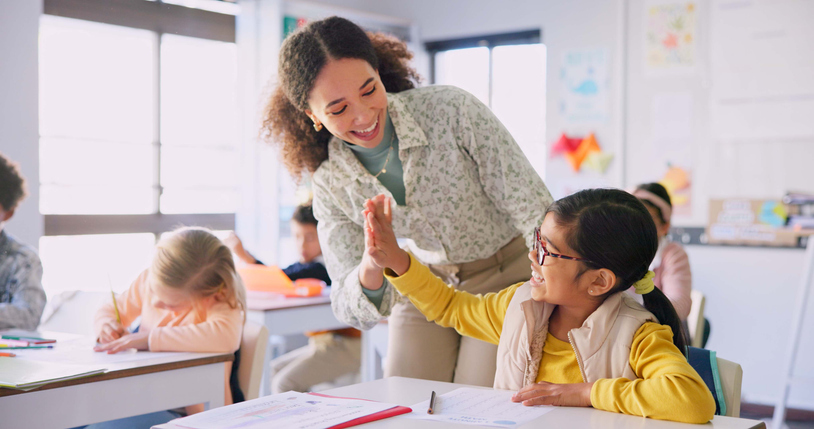When Francisco Lopez was twelve, he and his parents moved from Santiago, Brazil, to a small town in Massachusetts, where his father began working as a Portuguese professor at a university. Accompanied by his parents, Francisco enrolled in a local middle school, where his father enacted the role of family interpreter.
They are greeted by the school principal, Mr. Murtaugh, who graciously takes them on a quick tour of the school. At the conclusion, Francisco takes a language test to determine if he is a multilingual learner. A week later, he begins school. Hearing a cacophony of sounds in a language he does not understand and unsure where his classrooms, locker, or anything is in the building, he pulls his cell phone out of his pants pocket and calls his mother. “Please come get me!” he implores. His mother grabs her keys and hurriedly drives to the school, where Francisco anxiously waits for her to rescue him from the painful experience.
When his father arrives home from work and asks how Francisco’s first day of school went, Francisco and his mother are afraid to tell his father the truth for fear of disappointing his choice to move the family so far from home. Throughout the rest of the week, Francisco goes to school briefly and calls his mother to take him home. While this is occurring, [neither] Mr. Murtaugh nor his teachers have any idea that Francisco is missing the first week of classes.
It is not until the end of the week that Francisco and his mother tell his father what is occurring. Armed with this information, the whole family returns to the middle school to meet with Principal Murtaugh to see what can be done to ensure that Francisco is welcomed into his new school community.
(Cohn-Vargas and Zacarian, 2024, pp. 23–24)
In this article, we explore some of the key foundations for building a culture of trust and compassion and why it matters. We also provide three ways that educational leaders can foster this culture through building trusting and caring spaces at school and affirming home–school partnerships.
Consider your responses to the following questions:
1. Describe two or three activities that Principal Murtaugh did to support Francisco and his family in feeling welcome.
2. What are two or three additional activities that you would have liked Principal Murtaugh to have done?
3. How do the activities that you listed account for Francisco’s home language and culture?
We have asked these questions of many school administrators across the US and elsewhere. Many reply that multilingual, multicultural staff welcome new students and their families. Many also share that they are too busy to meet with individual students and families and trust that staff will support new students’ entree. We understand this challenge, especially because school administrators perform a huge number of planned and unplanned tasks and activities every day.
At the same time, many of us scholars in the foundations of culture as a way of being and acting know the critical importance of building and sustaining a community where all students feel that we care for them unconditionally. A culture of care allows students to possess a sense of safety, belonging, value, competence, and the confidence to speak for themselves and on behalf of others. These conditions are the underpinnings of identity safety.
Our research demonstrates the powerful role that administrators play in creating a culture of caring—especially as it relates to school policies, practices, and structures. One of the key elements for creating such a crucially important culture is partnering with MLs’ parents/guardians and educators.
Three Strategies for Building and Strengthening Identity Safety at Home and School
1. Welcome new students and families.
We might argue reasonably that the reasons for Francisco’s actions were the absence of a feeling of safety, a sense of belonging, acknowledgment, and competence and that the omnipresence of these feelings compelled him to flee his new school. One of the key things that would have helped Francisco and his parents feel welcome would have been having a multilingual, multicultural interpreter. While this might seem like an obvious solution, it’s helpful to consider the role that interactions and lots of them play. Renowned developmental psychologist Lev Vygotsky’s (1978) contributions affirm the significance of social interactions. We all make meaning of the world around us by combining what we already know and have experienced with the interactions and encounters that we have with others.
In our example, Francisco has had years of prior schooling experiences in Santiago, Brazil, and his parents have had years of experiences as learners and as parents. However, the school principal Mr. Murtaugh spoke in a language that Francisco didn’t understand and engaged in a monologue that dominated the conversation.
Creating a welcoming environment for multilingual learners and their families must include a flow of back-and-forth interactions demonstrating our curiosity about and openness to building connections. In our example, Francisco was deprived of this urgently needed component—interacting. No school leader, even the most seasoned, wants to deprive students or families of interacting with us.
To do this well means supporting relevant and meaningful interactions between and among our students and their families (Zacarian and Silverstone, 2020). For example, let’s say that Mr. Murtaugh enlists a multilingual, multicultural student to join the school tour he is facilitating.
Would the student’s presence alone support the type of rich interactions needed? No, it won’t happen by chance. We must think carefully about how to partner meaningfully with students, families, and educators. It starts with our creating spaces for listening.
2. Listen to students, parents/ guardians, and educators.
Listening involves meeting with individuals or groups and actively listening, observing actions and reactions, and making connections with what individuals and/or groups say and do. As a school leader, it is important to follow a conversation and absorb what is stated without judgment or interruption. The skills needed for engaging in the type of active listening involve:
• Asking open-ended questions to genuinely show our curiosity. For example, as Mr. Murtaugh takes the family on the tour, he shares the time that school starts and ends and how long classes are. He then asks Francisco and his family to describe what a school day looked like in his prior school.
• Paying attention to what students, families, educators, and others share by demonstrating that we are actively listening. This entails using a speaker’s name, referencing what a speaker says, and, as importantly, extending the conversation by asking for clarification or more information and/or collaboratively expanding on what is being stated.
◊ An example is from an interaction that Cinda Jones, a teacher of multilingual learners, had with her school principal. Cinda stated: “It is difficult for me to know what students understand in English. I am trying to assign them roles that they can do, like group timekeeper and illustrator.” In response, the school principal stated: “Cinda, I, too, find it hard to know what a student is and is not understanding. How have you found the roles of illustrator and timekeeper helpful for your multilingual learners?”
• Listening can offer ML parents/ guardians, students, and educators a voice. Parents/ guardians can share their hopes, dreams, and worries for their children and offer invaluable insights about a school’s practices and policies. Educators can share practices that build trust, ask important questions, and make suggestions to strengthen our work.
• Listening moves us away from being judgmental and engaging in a monologue. It also inhibits us from asking questions that require a one-word (e.g., yes/no) or fill-in-the-blank response. Actively listening and responding moves us to have an open dialogue and show our genuine interest and curiosity about MLs and their families and educators. It signifies a move toward creating identity-safe spaces through building deeper connections and relationships with everyone.
3. Foster caring relationships.
One of the most action-oriented steps that school leaders can take is to support students and families for who they are and the tremendous assets that they possess. Important ways to encourage identity-safe spaces across school and home are to encourage teachers, specialists, and everyone, including ourselves, to:
• Share the positives that we see students doing with parents and guardians, and
• Support these positives to occur in the classrooms and at home.
Three strategies for supporting identity-safe spaces at school and home include:
a. Continuously providing teachers, specialists, and all who work with multilingual learners with examples of positive experiences that you have observed of student’s multiple and varied identities.
◊ For example, high school principal Mr. Stanley shared the following with a US history teacher about Abdul. “Abdul is a careful listener with his class partners. He clarifies what he has heard and affirms what classmates have stated. I appreciate his collaborative leadership. Abdul is also a wonderful illustrator. Often when he works with a group, I see that he draws what is being shared. His classmates seem to appreciate his ability to visualize the key ideas. I appreciate what you are doing in class! It would be great to share these many positives with his parents and to honor what they are doing at home to support Abdul’s strengths. It is so great when we learn from students’ families.”
b. Supporting awareness and offering tools to deconstruct, dismantle, and counteract the power of the negative stereotypes about identity.
◊ For example, share positive experiences you have observed in classrooms, the cafeteria, and elsewhere, such as: “Jamille is very strong at seeing when things are unfair. For example, she noticed a classmate wasn’t participating. I appreciated her noticing this, sharing this in a very polite and respectful way, and asking peers to encourage their peers to speak. Jamille is a natural mediator who seeks and encourages everyone’s active participation. It would be great to share this with her parents and to find out more about the activities they do at home to support Jamille’s leadership and empathy.”
c. Help children come to celebrate different social identities and cultivate diversity as a rich shared resource.
◊ For example, it is helpful to learn about the various personal, social, cultural, and life experiences of students and their families. We can do this by encouraging everyone in a school community to ask questions about children’s strengths and assets. Our overall goal should be to learn about each child’s and family’s rich identities to support them to feel safe and to have a sense of belonging, value, competence, and, as importantly, the confidence to share their thoughts, hopes, dreams, questions, and more in partnering with us. That stance involves having a sense of curiosity to learn as much as possible about our students and their families and encouraging everyone to do the same. An application is to support our encouraging staff to learn about the activities that students and their families enjoy doing together and draw from these to build affirmational partnerships and connections with what is being learned. Let’s say, for example, that we learn that a favorite activity of one family is taking the train to visit relatives in a nearby city. We learn that the child’s father and uncle are professional jazz musicians, and that the family often goes to their jazz performances. We might ask the child if his father and uncle might like to come to our history class when we are studying the Jazz Age.
In this article, we explored some of the key foundations of identity safety. We discussed the importance for school leaders of building a culture of trust and compassion with students, families, and our school community and why it matters.
We provided three key ways for educational leaders to welcome new students and families and strengthen our partnerships with students, parents/ guardians, and staff. The ideas from this article were drawn from Identity Safe Spaces at Home and School: Partnering to Overcome Inequity by Becki Cohn-Vargas and Debbie Zacarian.
References:
Cohn Vargas, B., and Zacarian, D. (2024). Identity Safe Spaces at Home and School. NY: Teachers College Press
Vygotsky, L. (1978). Mind in Society (M. Cole, Trans.). Harvard University Press.
Zacarian, D., and Silverstone, M. A. (2020). Teaching to Empower: Taking Action to Foster Student Agency, Self-Confidence, and Collaboration. ASCD.
Dr. Becki Cohn-Vargas, a scholar in identity safety, has a rich and varied career with over 35 years of experience as a Spanish bilingual teacher, principal, and superintendent in diverse pre-K–12 settings. She’s co-authored four books, written extensively on identity-safe teaching, produced films, and consulted with schools nationwide. beckicohnvargas.com
Dr. Debbie Zacarian, of Zacarian and Associates (www.zacarianconsulting.com/about), is a strengths-based leadership, instructional practices, and family–school partnership expert with culturally and linguistically diverse populations. With 30+ years’ experience as an administrator, university faculty, and educational service agency leader, she has written numerous professional books and does global consulting and speaking engagements.














